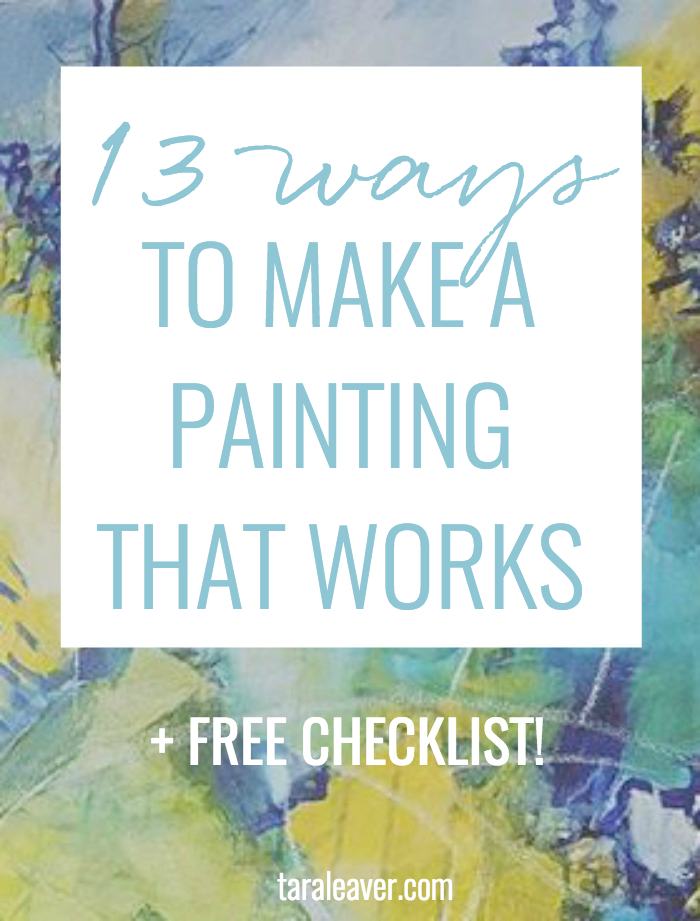
I’ve been finishing an unusual amount of paintings recently. And because each time it forces me to really look at what I’ve done and be very clear in myself that it works both as a whole and as parts that are in conversation with each other, I like to think I’m getting a bit better at it. 😉
In my experience, the two most important things to check when you’re painting are values and composition; values {as I’m sure you know} being the darks and lights of the painting, and composition covering several of the points I’ve included below.
It occurred to me that it might be quite handy to have a ready list of things to check when deciding if a painting works and is complete, so I made one. And you can download it free below!
Naturally this is my way and your art and experience may require only some of these, especially if your work intentionally flouts certain rules or traditions in art. Generally speaking though, I find these to be helpful guidelines.
So here’s what I check when I think a painting might be finished.
Values
The best ways I know to check values are to:
1: Squint – this will immediately make the range of values and their distribution very clear, and show what might need more balancing or more contrast.
2: Use a black and white filter in an app or a program like Picmonkey. If you have a smartphone you can just snap a photo and run it through an app; sometimes I upload it to Instagram and choose one of the black and white filters without actually sharing it, for a quick look.
Close up and far away
The painting needs to feel good both up close – all those little details and delicious textures – and from across the room. When you stand way back, what immediately sticks out? What’s jarring? Don’t ignore it because you want to be finished like ‘some of us’ are apt to do… {and by some of us I mean me}.
Upside down
I find turning the painting upside down never fails to give me instant information about anything that’s not sitting right. Again, standing way back helps with this.
Different sizes & odd numbers
Depending on the nature of your painting, you might want to check that any objects are unevenly spaced and in odd numbers. Less of a rule than a guideline, this can nevertheless make a huge difference to a painting. Balance doesn’t {have to} mean everything matching.
Negative space
Negative space is just as important as what’s taking up the positive space on your canvas. Try shifting your gaze to see it as if it were the positive space; are the shapes interesting or awkward? Do they hold their own without taking all the attention?
Tight vs loose
The eye wants to be interested and stimulated, and contrast is a great way to do this. Are there tighter, neater areas that sit well against the looser, more abstracted areas? {This obviously only applies if your painting isn’t about realism.}
Story
A painting doesn’t have to tell an obvious, explicit story, but the eyes {and heart, I believe} need a narrative of some kind, even if we don’t know exactly what it is. What is the painting saying? If it’s purely decorative, is it offering that effectively? Can the viewer wander around in the painting and feel things?
Ambiguity
I like to try to leave enough room for open endedness; parts of the painting that don’t ‘make sense’ but still work with the painting as a whole. I want my art to suggest or hint at things, not to tell the viewer exactly what they should be seeing. That may not be true for you of course. It depends on what you’re saying with your art.
Flow
For me, it’s important that the eye can flow around the canvas in any direction and not be confronted by awkwardness or jarring. While that is to a degree in the eye of the beholder, you can tell, especially with practice, when your eye is snagging on something that isn’t sitting quite right in the context of the painting. It’s not that all elements must be the same, or even the same style, but they must live together with a degree of harmony. Intentional awkwardness is hard {for me anyway!} to incorporate successfully.
Check your edges
So important and so easy to forget! The edges of your canvas are ready made boundaries for the work and as such play a part in the painting. If you paint an object in the centre, with no relationship to the lines that constitute the edges, it can float awkwardly in the space with no context. Allow things to wander off the edge, and make sure that anything that does is doing so gracefully. 🙂
Quick look in passing
I put my paintings where I’ll pass them often, and when I do I allow a glimpse as I pass. This can cause things to jump out, and I can then decide whether that was an intentional part of the painting or something I hadn’t noticed would happen.
Quiet space for the eye to rest
I want to say this is SO important, but of course some paintings are built differently. Again, this is a general guideline; the eye needs somewhere to rest from the ‘action’ going on in the painting. If the entire thing is busy, it can be exhausting to look at. If this is what the artist intends that’s one thing, but usually it’s far more effective for a painting to have quiet patches with not much going on.
Conversation
The way I see it, this has two parts:
1. When I look at a painting I see all its parts, all the different marks, shapes, colours and angles, as being in conversation with each other. Does that conversation have the feeling I was aiming for? It’s not about making all the elements alike, but is this type of mark, or this colour or arrangement echoed in some way anywhere else on the canvas? Or is it talking to itself like an awkward weirdo in the corner?
2. Then there is the interaction between viewer and painting. In my work, I’m aiming for the conversation to be complete in itself {to hang together} and also provoking; all the elements work together, but they also offer a hint at something more. Can the viewer bring their own stories, biases and thought processes to the painting and not feel it’s already all been done for them?
Overall, I think a lot of this is intuitive and as we develop our skills much of this becomes quick and unnecessary to articulate. But I still find that checking in against some or all of these points can help me bring a painting to a place where it feels complete and hangs together in a satisfying way.
Try some of these out on your most recently completed painting {even if you know it’s finished}. Is it helpful? How do you check your paintings? Anything I’ve missed here? Please share your experiences in the comments!


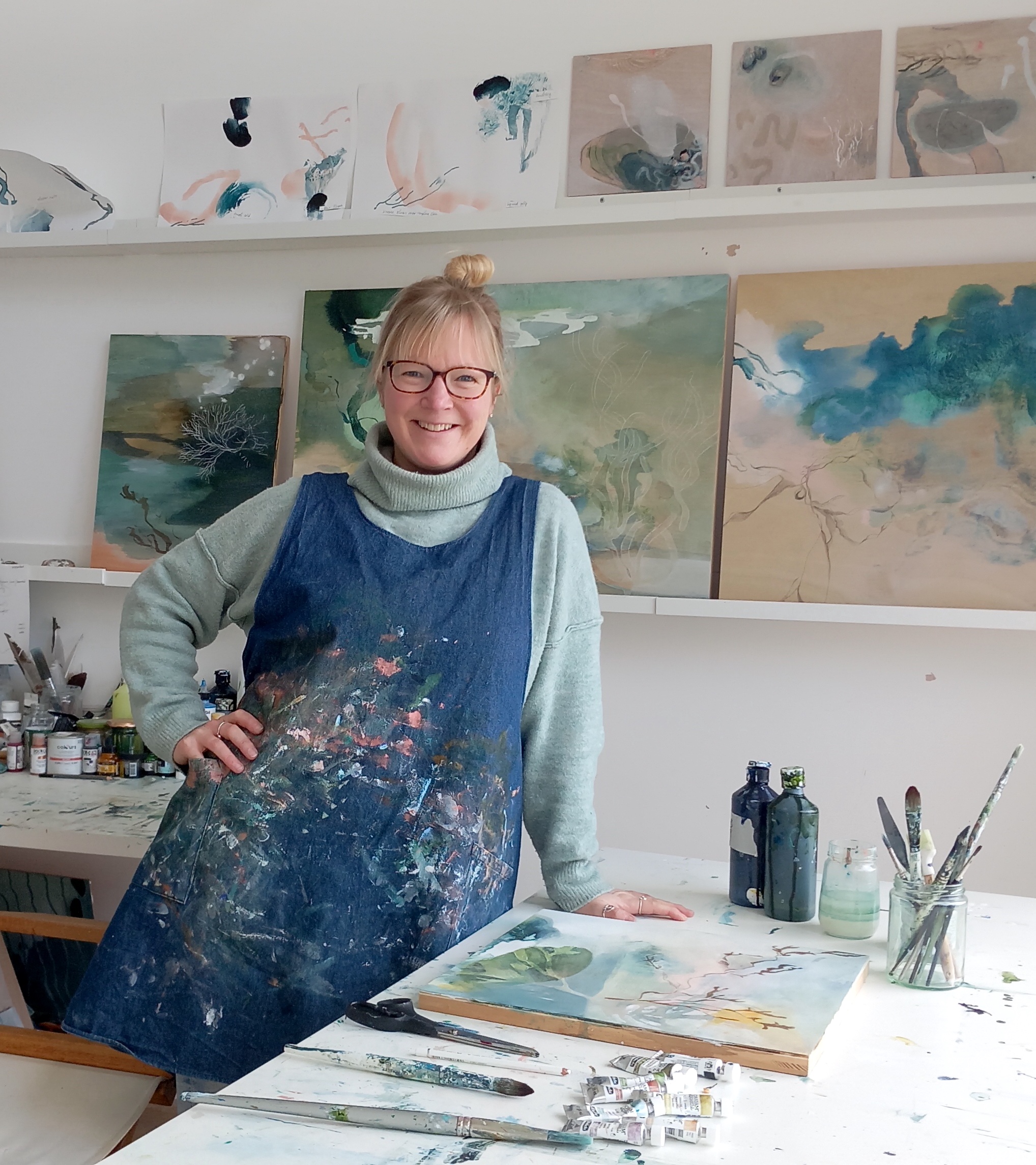
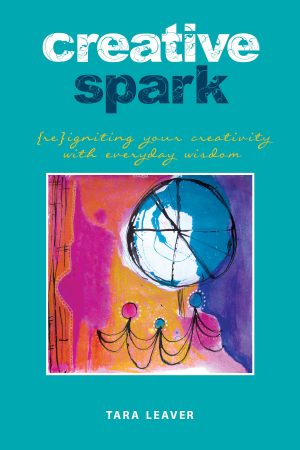
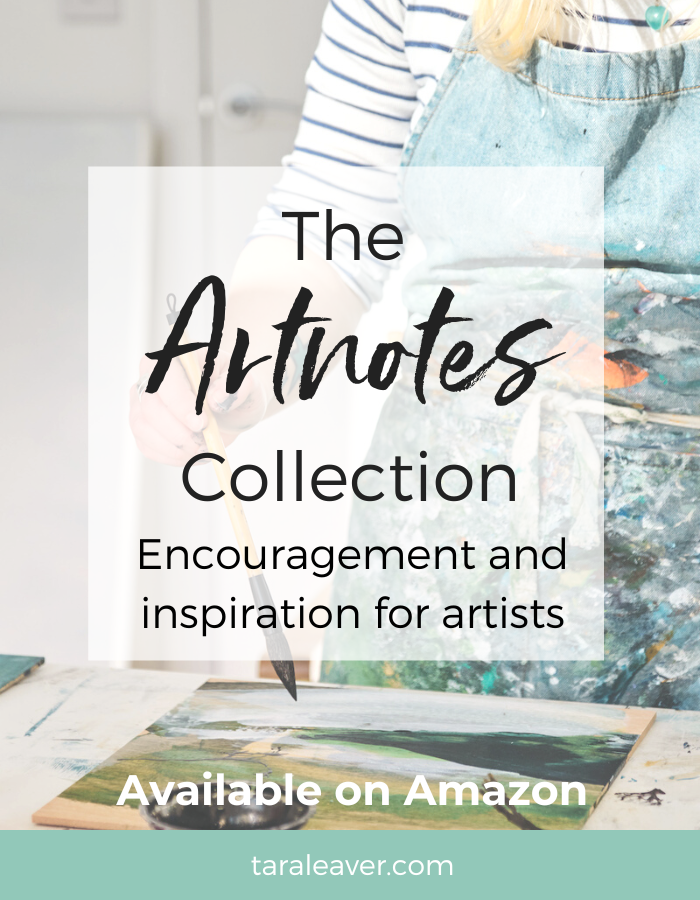
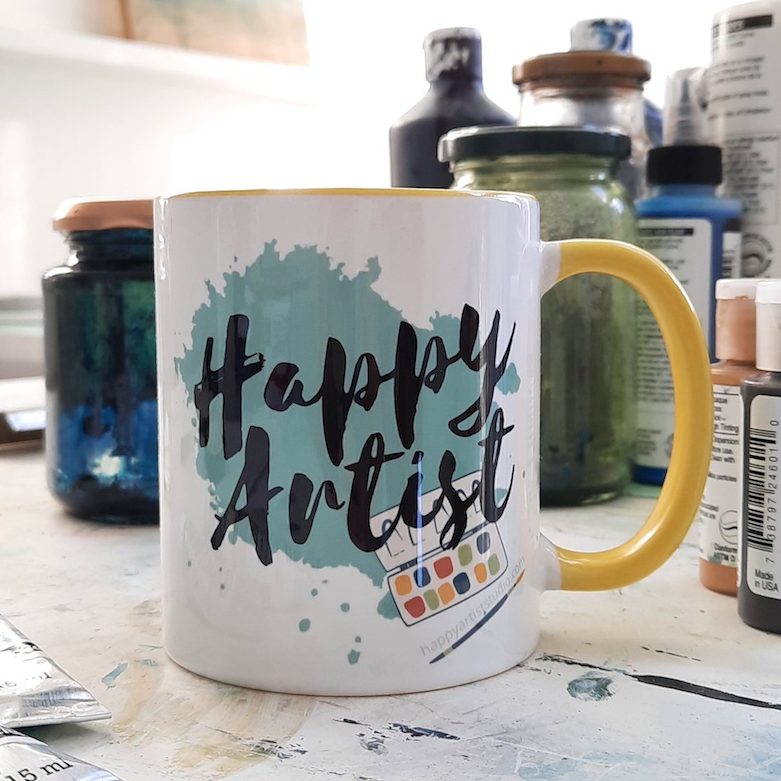
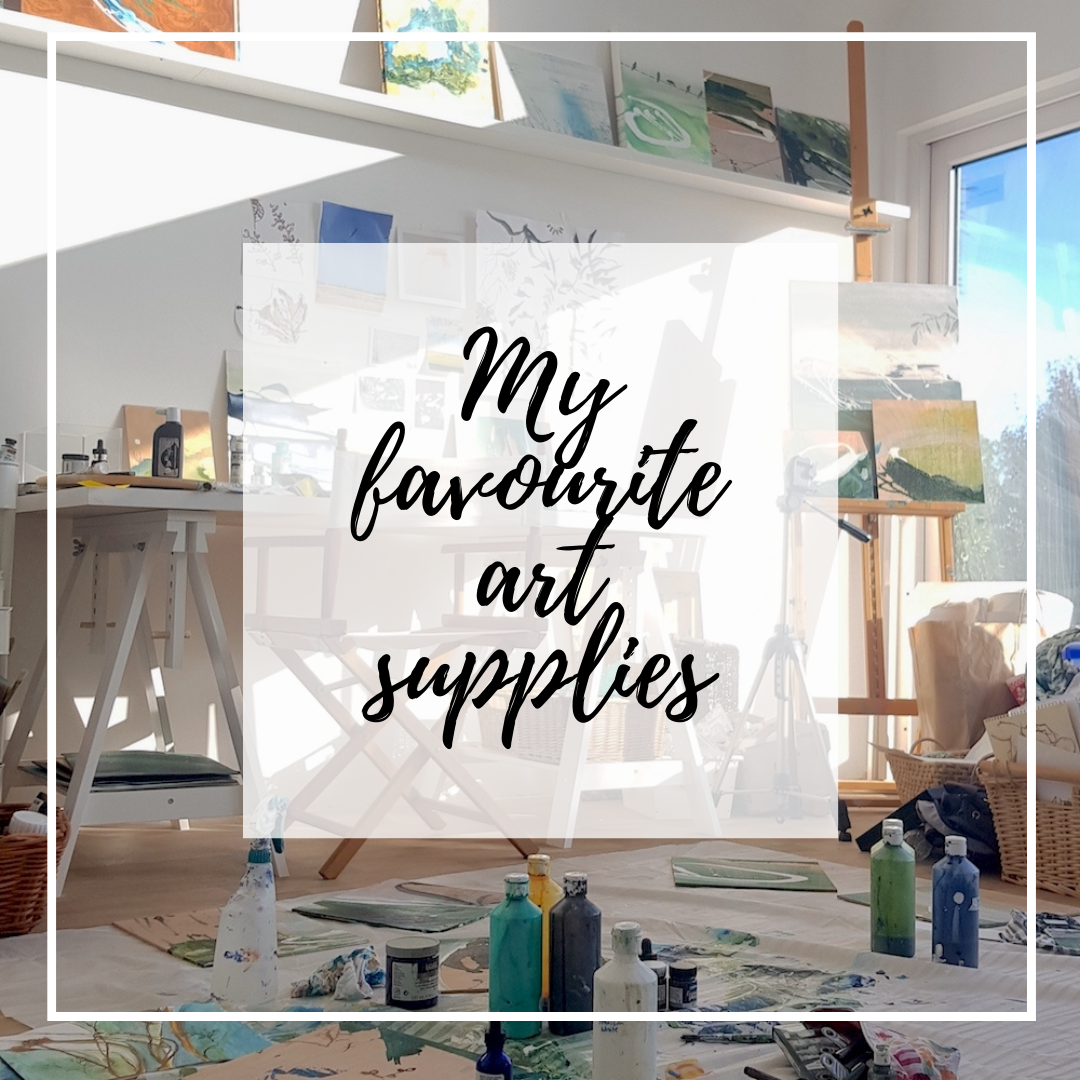
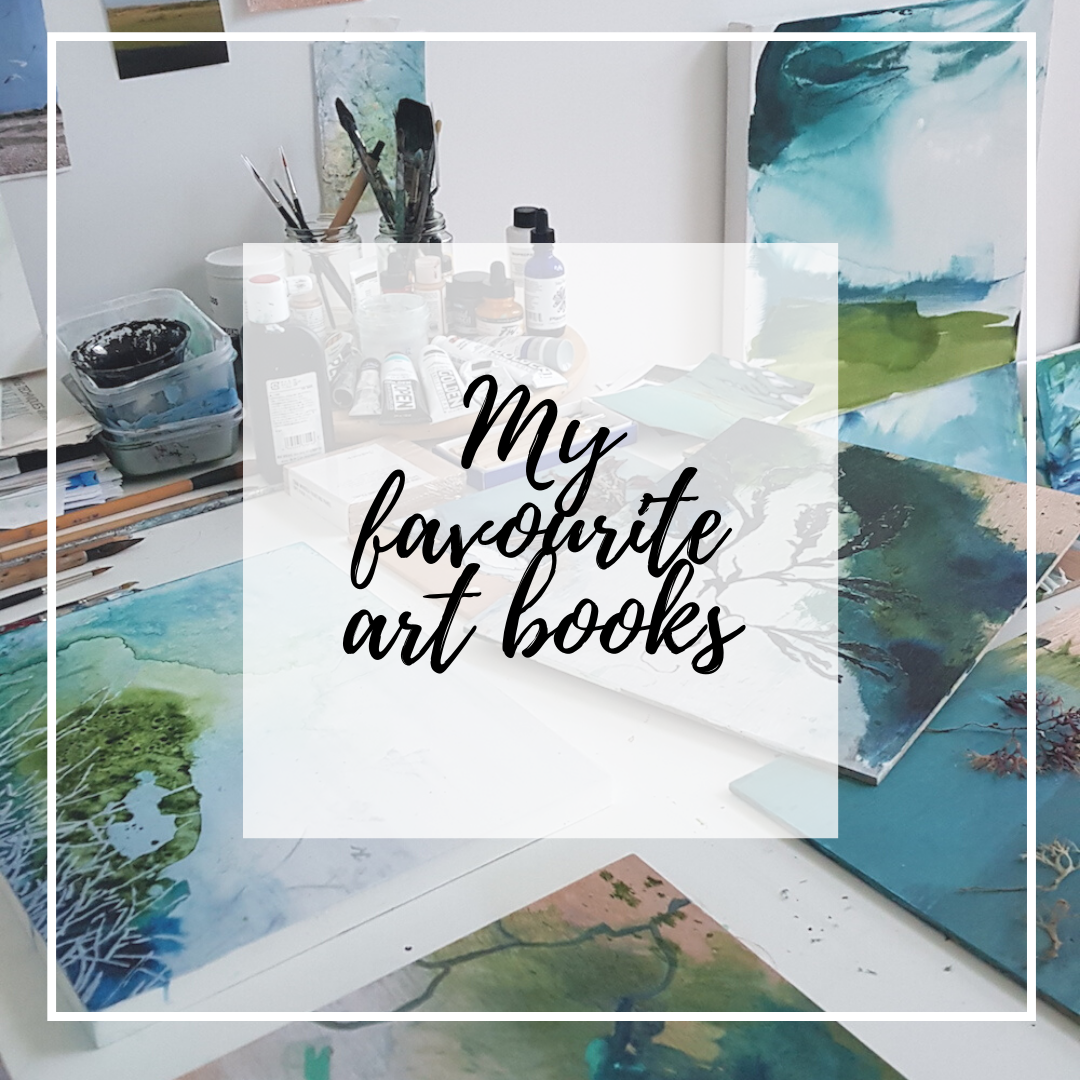
Hi Tara!
I was not able to download the 13 step checklist. Can you send it to me?
Sorry about that Tara! Try clicking here.
Great .thanks. love your art
Thanks,very thoughtful and useful.lts so hard to make a successful work every time
Yes it is! And best not to expect/hope for it I think. 🙂
Hi, I came here via Pinterest. On reading your list, I thought I would ask if you ever viewed your work through a mirror? I do this sometimes when I feel something “isn’t quite right” but don’t know what. Viewing it in reverse can usually reveal some glaring thing that I missed. Anyway, I like your list. I haven’t downloaded it as I’m not on my own laptop, but I have made notes, so thanks for sharing! 😀
Yes I have used a mirror! The one in my studio is a bit small but it’s definitely a good way to check for balance and if anything’s jarring. Glad it was helpful!
You can also use your cell phone to take a pic and then witch the pic to mirror-image. That works as well.
Good idea! Thanks Marike.
As I approach what I think might be the “finish line” of a painting I always hold the painting in my hands facing a mirror. It’s amazing how that change in perspective will make obvious what you did not notice before. This can be useful in abstract work but especially when working with the figure or representational works.
Clearly the mirror trick is a popular one! 🙂 I need to try that more often. I’ve noticed too that taking a photo on my phone and seeing the image on the screen can help show up things you miss in the original. Thank you for stopping by Marie!
Thank you Tara! As a beginner it’s really interesting and helpful.
So glad to hear that Jennie! Thank you for stopping by.
Tara,
Thought I’d let you know what I find helpful. I take a photo on My Ipad, phone would also work well, email it to myself and then print a copy in black and white. Can instantly see if values are working.
Thanks for your great ideas
Jill
That’s a great way to check the values, thanks Jill!
Perfect list. I already use most of these hints, and they really do make a big difference in a painting’s quality. Happy to find some additional hints to add to the ones I use. Thank you!
Glad you found some to add to your arsenal! 🙂
At the end of every painting day I put the canvas on a shelf at the end of my bed about 10 feet away on the opposite wall. This way I can look at it for a few hours and see what is amiss. I have a note pad beside my bed and write down what needs to be done. it works for me.
Love the logical/practical approach to it! I keep post its by my bed for all the inevitable ideas, but never connected it with painting notes for some reason! And sitting in bed is a great place to contemplate. Thanks for sharing Mike!
‘delicious textures’ – I love your saying!
I love to play with words as much as paint! 🙂
I am a beginner, I love art, I love playing with paint. I have been educating myself through the internet, no formal art education.
This list is really great! I have been wondering how to know when a painting is really done, I Love abstract art and am trying it for the first time. I’m excited with the challenges and possibilities. Your explanations are extremely helpful to me, thank you for taking the time to share your experience and wisdom❤️
Happy to hear it’s helpful to you Deb! Thank you for taking the time to leave a comment. 🙂
Very helpful thank you. It’s always helpful to have a checklist Thank you! I have compared my painting I love against your list and it rings true. Let me send you an example against an example of my work I am struggling with. Many thanks! Bev
Great Article! Thanks so much for sharing.
Glad you enjoyed it Sheila!
Love that you empathise with all artists Tara. Your list was referred to me from an artist session I take through the week, and I can see why it is so helpful. Love the open sharing – it empowers everyone! Great work.
So glad you enjoyed it Tania!
Great issues in your checklist..Thanks for allowing the download! One thing I look at near the end of a painting is the relationship between all the “opposites” we deal with and whether they occur too equally or are too one sided…like, lights and darks, warm and cool or bright and grayed colors, busy and quiet areas, hard and soft edges and on and on
Excellent point Eric – thanks for adding to the conversation!
You’re a , whole, genius; meaning that you have super power abilities, AND, are able to communicate genius thoughts to others in a clear, understandable, heartwarming way (which is a super power ability on its own)